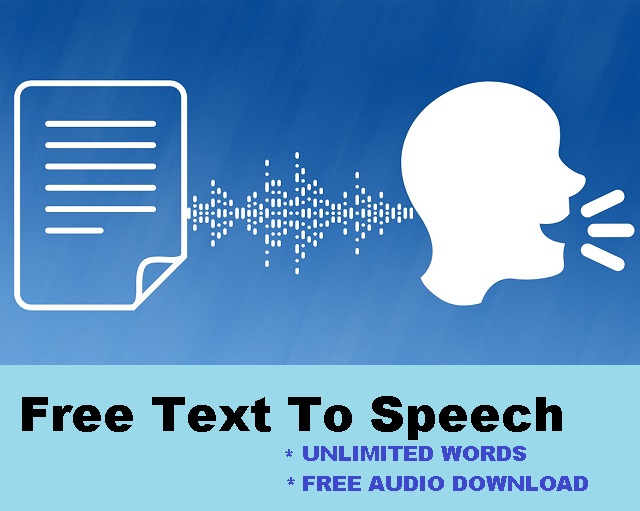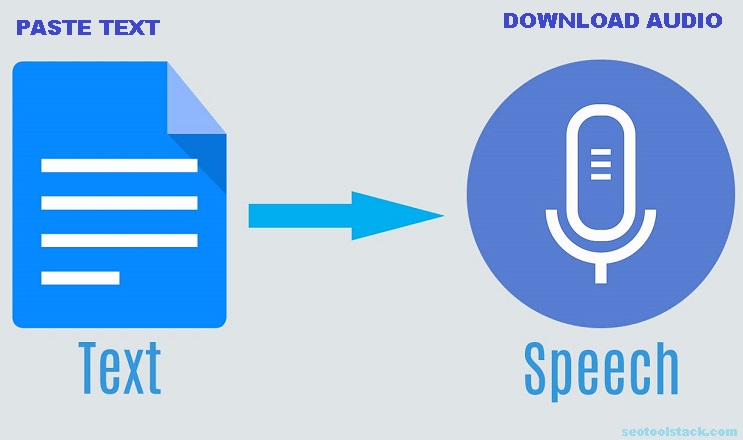

Enter your text to speech
A free text-to-speech (TTS) is a tool that converts written text into spoken audio at free of cost. It makes written content accessible to users who prefer to listen rather than read. Thanks to developments in artificial intelligence and natural language processing, this technology has advanced throughout time.

1. Text input: The user enters the written text that they want to be spoken. It may be presented as plain text, a document, a web page, or other digital information, among other formats.
2. Text processing: The text input is broken down into smaller text units, such as sentences, phrases, or words, by the TTS system. For a more natural-sounding output, it evaluates the linguistic structure, punctuation, and other components.
3. Speech synthesis: The TTS system uses synthetic voices to create speech on the fly or pre-recorded speech chunks. Concatenative synthesis, which combines pre-recorded units, and parametric synthesis, which generates speech algorithmically, are two approaches used to create synthetic voices.
The TTS system creates spoken audio that corresponds to the input text as the audio output. The pitch, tone, and tempo of the synthesized voice can change depending on the application and user settings.
The technology of text-to-speech is widely employed in many different applications, including:
1. Accessibility: TTS makes written content, including books, websites, and papers, available to people who are blind or visually impaired.
2. Assistive technology: TTS is incorporated into a variety of assistive technologies, including screen readers, navigational systems, and smart home assistants, to improve user interaction.
3. Language learning: By offering precise native pronunciations, TTS can aid language learners in developing their listening and pronunciation abilities.
4. Podcasts and audiobooks: Text-to-speech (TTS) technology may transform written books or articles into spoken content for podcasts and audiobooks.
5. Voice user interfaces: TTS is used in voice-enabled devices and applications to deliver responses and communicate with people in a more natural way.
With the help of AI (artificial intelligence), text-to-speech converters continue to improve in terms of voice quality, naturalness, and adaptability to different languages and accents.
A text-to-speech converter tool's operation entails a number of processes that incorporate diverse technologies and algorithms.
1. Text Preprocessing: The first thing you should do when entering text into the TTS tool is to preprocess it. This entails examining the text to comprehend its punctuation, formatting, and linguistic structure. The material is divided into manageable chunks, such as sentences, phrases, or words, which aids in producing speech that sounds more natural.
2. Text Analysis: The TTS system analyzes the text's linguistic content at this step. In order to determine the proper pronunciation, intonation, and emphasis for each word and phrase, it recognizes the parts of speech, sentence structure, and other grammatical components.

3. Phoneme mapping: The smallest units of sound in a language are called phonemes. The TTS system converts the text's words and phrases into the phonemes that correspond to them, representing how each word should sound when spoken.
4. Prosody and Emotion: The rhythm, pitch, and intonation of speech are all examples of prosody. The synthetic speech is also thought to sound more expressive and human-like when emotion is present. The synthesized voice is given the right prosody and emotional cues via TTS tools, which makes it seem more authentic and compelling.
5. Speech Synthesis: This stage involves the actual synthesis of speech. The two primary techniques for speech synthesis are:
a. Concatenative Synthesis: With this technique, the TTS system combines phonemes, diphones, or triphones from a database of previously recorded human speech segments to produce the desired output. Although this method can produce speech that sounds highly natural, it needs a sizable database and can be computationally expensive.
b. Parametric Synthesis: Using mathematical models and parameters, the TTS system generates speech algorithmically in this technique. It relies on intricate signal processing and statistical modeling rather than a sizable archive of previously recorded speech. Modern TTS systems frequently use parametric synthesis because of its adaptability and effectiveness.
6. Post-processing: After the speech has been synthesized, the outcome may be polished using a variety of post-processing techniques. Pitch adjustments or word transition blending may be necessary.
7. Audio Output: The final step is to create an audio file or live audio output that can be played over speakers or headphones using synthetic speech.
These models are extremely useful in many situations because they can produce speech that is nearly undetectable from human speech.
Yes, this online Text to Speech converter from Seotoolstack.com allow you to download the synthesized speech as an audio file.
If you are using this text-to-speech tool, it provides the option to download the generated speech as an audio file. This TTS allow you a download link for the audio file once the synthesis is complete.
Try These Tools: Article Rewriter, Total Word counter, Plagiarism Cheker.